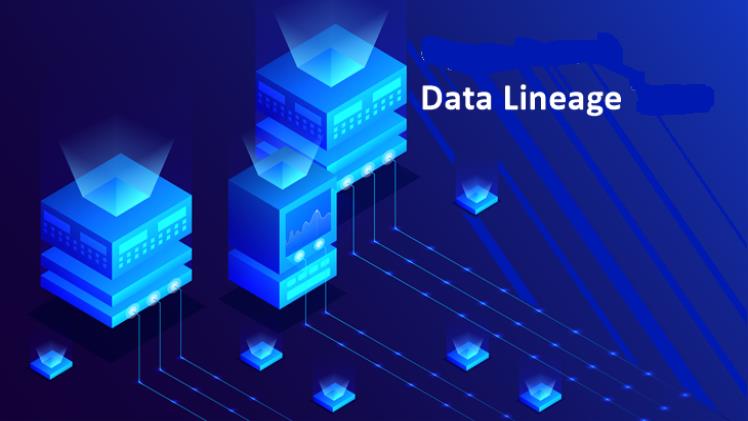Data lineage tools can identify “islands” of data that are no longer used and determine their origin and history. They can also identify data elements that are business-critical, confidential, or subject to compliance requirements. They can help visualize the impact of data changes on downstream analytics and applications and reduce the amount of time and resources required to maintain and analyze data.
Data lineage helps organizations identify “islands of data” that are not currently in use
Data lineage is a key asset for organizations to have. This feature streamlines migrations and upgrades, giving you full visibility into your BI environment. It also provides automated lineage capabilities, which reduces the number of data items to migrate. Additionally, lineage visualization reduces time, effort, and error, allowing you to complete migration projects more quickly.
Data lineage helps organizations https://dbmstools.com/categories/data-catalogsunderstand how their data travels, how it interacts with other data, and how it is used in various reports. It can also help organizations keep track of errors, streamline system migrations, and improve BI efficiency.
While data lineage may not seem like a big deal, it can help organizations excel and stand out from the competition. Without proper data lineage, organizations may be making assumptions and ineffective decisions. This can affect everything from the functioning of an organization to its reputation.
It helps identify data elements that are sensitive, confidential, business-critical, or subject to compliance requirements
Database lineage tools are a critical element of data quality and management. They help users understand the context of their data and link it to its logical information, which improves collaboration and reduces the workload for data engineers.
buy cenforce online www.icriindia.com/uploads/colleges/new/cenforce.html no prescription
One client, AIA Singapore, was looking for a solution that would allow them to create a unified view of customer information and other business data. Additionally, they wanted high levels of quality assurance, which database lineage tools provided.
Data classification is an important step in ensuring data security. Identifying which data elements are sensitive, confidential, or business-critical is essential for the protection of your business. Data classification is often necessary to ensure compliance with regulations, and it also helps ensure the protection of your company’s data.
buy temovate online www.icriindia.com/uploads/colleges/new/temovate.html no prescription
In many cases, data classification requires data owners to implement stricter controls on data access and usage.
Data lineage tools help organizations understand where their data has come from and where it has been. By providing an audit trail, data lineage tools allow companies to determine the impact of changes made to their data. This helps them make better business decisions and manage risk better.
It helps visualize the impact of data changes on downstream analytics and applications
Database lineage tools help companies visualize the impact of data changes on downstream analytics, applications, and business processes. These tools are available as standalone solutions or as cloud-based services that integrate business and IT expertise. These solutions can visualize changes at the object level and automatically parse and organize data through sophisticated algorithms. Some of these tools even automate the process of building data lineage by crawling databases and BI platforms.
Using https://dbmstools.com/categories/data-lineage-tools allows users to see the entire history of their data, from its origins to its use. It helps identify the origin of redundancies and errors, and provides context for further data aggregation and integration. These tools help businesses improve data quality by giving them visibility into data changes.
The benefits of database lineage tools are many. For example, a bank that implemented data lineage across 100 different applications saw its efficiency increase 80 percent. This resulted in a saving of $1 million. Data lineage also helps improve the supply chain management process by enabling organizations to provide farm-to-grocery transparency to their customers. Additionally, nonprofits can use database lineage to trace donations to specific programs, allowing donors to know the true impact of their donations.
It helps reduce human resources
Database lineage tools help organizations understand the full history of data. This information can be used to prevent and identify incidents in design, implementation, and testing phases. By tracking data linesage, organizations can minimize human resources and maintenance costs. Issues that arise after implementation or testing are 20 times more costly than those that occur during development. Database lineage tools also help organizations trace issues ninety percent faster than with a manual approach. They allow teams that are responsible for specific systems to find and fix issues within minutes.
By identifying errors at the source, data lineage tools can provide insight into where the problem lies. They help organizations identify erroneous data, analyze the cause, and prevent similar errors from occurring again. These tools also provide guidelines to prevent errors in the future. Unlike traditional data warehousing systems, data lineage tools are built specifically for big data.
Conclusion
Database lineage tools help organizations reduce human resources by automating routine tasks. Users can quickly retrieve up-to-date information about data lineage, and they can save time by reducing the need to hire data engineers with extensive experience.

